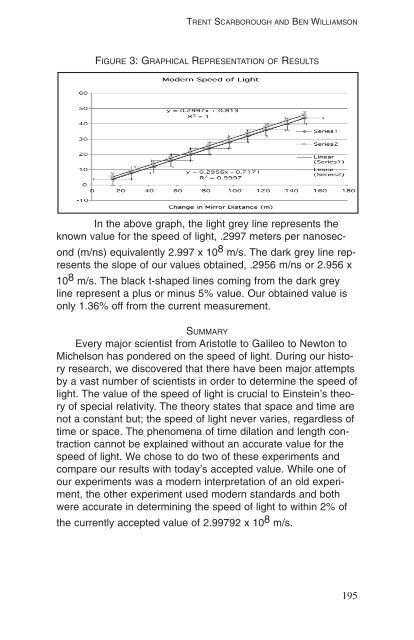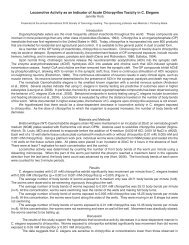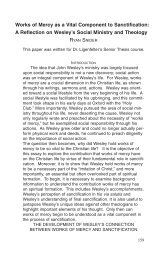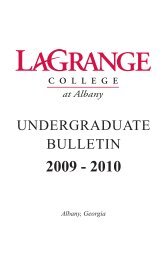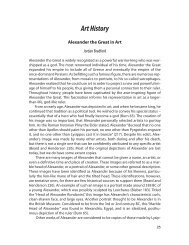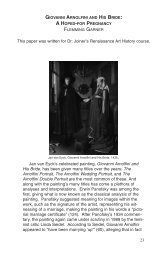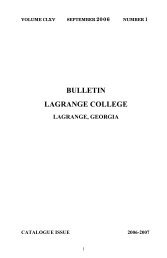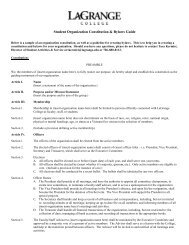The Speed of Light: Historical Perspective and Experimental Findings
The Speed of Light: Historical Perspective and Experimental Findings
The Speed of Light: Historical Perspective and Experimental Findings
You also want an ePaper? Increase the reach of your titles
YUMPU automatically turns print PDFs into web optimized ePapers that Google loves.
TRENT SCARBOROUGH AND BEN WILLIAMSON<br />
FIGURE 3: GRAPHICAL REPRESENTATION OF RESULTS<br />
In the above graph, the light grey line represents the<br />
known value for the speed <strong>of</strong> light, .2997 meters per nanosecond<br />
(m/ns) equivalently 2.997 x 10 8 m/s. <strong>The</strong> dark grey line represents<br />
the slope <strong>of</strong> our values obtained, .2956 m/ns or 2.956 x<br />
10 8 m/s. <strong>The</strong> black t-shaped lines coming from the dark grey<br />
line represent a plus or minus 5% value. Our obtained value is<br />
only 1.36% <strong>of</strong>f from the current measurement.<br />
SUMMARY<br />
Every major scientist from Aristotle to Galileo to Newton to<br />
Michelson has pondered on the speed <strong>of</strong> light. During our history<br />
research, we discovered that there have been major attempts<br />
by a vast number <strong>of</strong> scientists in order to determine the speed <strong>of</strong><br />
light. <strong>The</strong> value <strong>of</strong> the speed <strong>of</strong> light is crucial to Einstein’s theory<br />
<strong>of</strong> special relativity. <strong>The</strong> theory states that space <strong>and</strong> time are<br />
not a constant but; the speed <strong>of</strong> light never varies, regardless <strong>of</strong><br />
time or space. <strong>The</strong> phenomena <strong>of</strong> time dilation <strong>and</strong> length contraction<br />
cannot be explained without an accurate value for the<br />
speed <strong>of</strong> light. We chose to do two <strong>of</strong> these experiments <strong>and</strong><br />
compare our results with today’s accepted value. While one <strong>of</strong><br />
our experiments was a modern interpretation <strong>of</strong> an old experiment,<br />
the other experiment used modern st<strong>and</strong>ards <strong>and</strong> both<br />
were accurate in determining the speed <strong>of</strong> light to within 2% <strong>of</strong><br />
the currently accepted value <strong>of</strong> 2.99792 x 10 8 m/s.<br />
195


